Under-the-Radar Micro-History,
Local History, & Public History
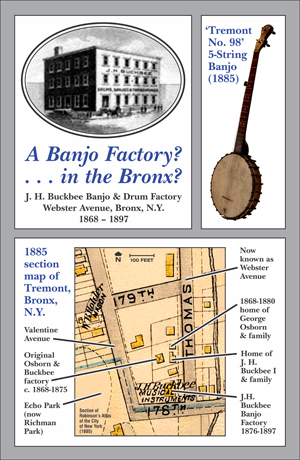
Is there really more to history than generals and wars? Thankfully, yes! Out there to be chronicled by historians are the entire parade of human events and those that did the marching --- the gamut of dolts-to-visionaries, from chalk-talkers and chocolatiers, to prostitutes and proslytizers, to screwdrivers and screwballs. There is no shortage of raw material.
For example, it was pile of rotting banjo parts that led to deep research and an acclaimed book on that old banjo, its maker, its player, Chauncey Richmond & "The Old Buckbee." As in all works of history, micro and macro, the illumination of previously unknown contextual connections enhances our understanding of the world around us.
Below are publications in this category currently available. Click on any book title below and you'll go to a page with a more detailed description of the book, a preview of selected pages, and a link to purchase and pay via PayPal.
Click on any title below for more information,
and to read the contents and introduction.
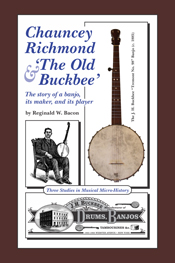
Chauncey Richmond
& "The Old Buckbee":
The Story of a Banjo,
its Maker, and Its Player
(Three studies in
musical micro-history)
by Reginald W. Bacon
(Newburyport, Mass.:
Variety Arts Press, 2018)
6x9 softcover, 224 pages
ISBN: 978-0-9977528-3-0
LOC: 2018905457
$22.00 (US) includes
USPS media mail shipping
in the U.S.
Payment accepted by PayPal
(see "Buy Now" below or on the full description page).
To order by postal mail, send order details, your shipping address, and payment by check to Variety Arts Enterprises, P.O. Box 489, Newburyport, MA 01950.
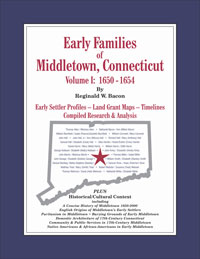
Early Families
of Middletown, Connecticut
- Volume I: 1650-1654
(Early Settler Profiles,
Land Grant Maps, Timelines, and
Compiled Research & Analysis)
By Reginald W. Bacon
(Newburyport, Mass.:
Variety Arts Press, 2012)
8.5x11.0, 195 pages; comb-bound
ISBN: 978-0-9817945-5-6
LOC: 2012949502
$50.00 (US) includes
USPS media mail shipping
in the U.S.
Payment accepted by PayPal
(see "Buy Now" below or on the full description page).
To order by postal mail, send order details, your shipping address, and payment by check to Variety Arts Enterprises, P.O. Box 489, Newburyport, MA 01950.
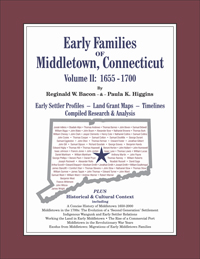
Early Families
of Middletown, Connecticut
- Volume II: 1655-1700
(Early Settler Profiles,
Land Grant Maps, Timelines, and
Compiled Research & Analysis)
By Reginald W. Bacon
(Newburyport, Mass.:
Variety Arts Press, 2024)
8.5x11.0, 448 pages; hardcover
ISBN: 978-0-9817945-8-7
LOC: 2024933907
$70.00 (US) includes
USPS media mail shipping
in the U.S.
Payment accepted by PayPal
(see "Buy Now" below or on the full description page).
To order by postal mail, send order details, your shipping address, and payment by check to Variety Arts Enterprises, P.O. Box 489, Newburyport, MA 01950.
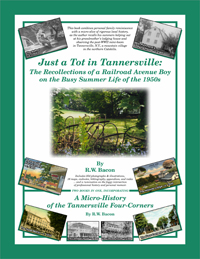
Just a Tot in Tannersville:
The Recollections of
a Railroad Avenue Boy
on the Busy Summer Life
of the 1950s
(Two books in one,
incorporating
A Micro-History of the
Tannersville (N.Y.)
Four-Corners)
By Reginald W. Bacon
(Newburyport, Mass.:
Variety Arts Press, 2011)
8.5x11.0, 106 pages; comb-bound
ISBN: 978-0-9817945-2-5
LOC: 2008931627
$40.00 (US) includes USPS media mail shipping in the U.S.
Payment accepted by PayPal
(see "Buy Now" below or on the full description page).
To order by postal mail, send order details, your shipping address, and payment by check to Variety Arts Enterprises, P.O. Box 489, Newburyport, MA 01950.

The Visitor's Guide
to the Weeks Brick House & Gardens
A guide to the 1710 house,
gardens, public hiking trails,
and 300-year history
of the Weeks family farmstead
in Greenland, N.H.
by Reginald W. Bacon
(Newburyport, Mass.:
Variety Arts Press, 2015)
5.5x8.5, softcover, 60 pages
ISBN: 978-0-9817945-9-4
LOC: 2015914615
$16.00 (US) includes
USPS media mail shipping
in the U.S.
Payment accepted by PayPal
(see "Buy Now" below or on the full description page).
To order by postal mail, send order details, your shipping address, and payment by check to Variety Arts Enterprises, P.O. Box 489, Newburyport, MA 01950.
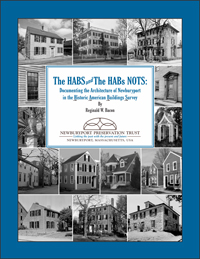
The HABs and the HABs NOTs:
Documenting the Architecture
of Newburyport (Mass.)
in the Historic American
Buildings Survey
by Reginald W. Bacon
(Newburyport, Mass.:
Variety Arts Press, 2017)
8.5x11.0, 160 pages;
casebound (hardcover)
ISBN: 978-0-9977528-1-6
LOC: 2016920943
$35.00 (US) includes
USPS media mail shipping
in the U.S.
Payment accepted by PayPal
(see "Buy Now" below or on the full description page).
To order by postal mail, send order details, your shipping address, and payment by check to Variety Arts Enterprises, P.O. Box 489, Newburyport, MA 01950.
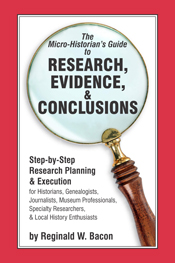
The Micro-Historian's Guide
to Research, Evidence,
& Conclusions:
Step-by-Step
Research Planning & Execution
by Reginald W. Bacon
(Newburyport, Mass.:
Variety Arts Press, 2018)
6x9 softcover, 112 pages
ISBN: 978-0-9977528-4-7
LOC: 2018905458
$16.00 (US) includes
USPS media mail shipping
in the U.S.
Payment accepted by PayPal
(see "Buy Now" below or on the full description page).
To order by postal mail, send order details, your shipping address, and payment by check to Variety Arts Enterprises, P.O. Box 489, Newburyport, MA 01950.


